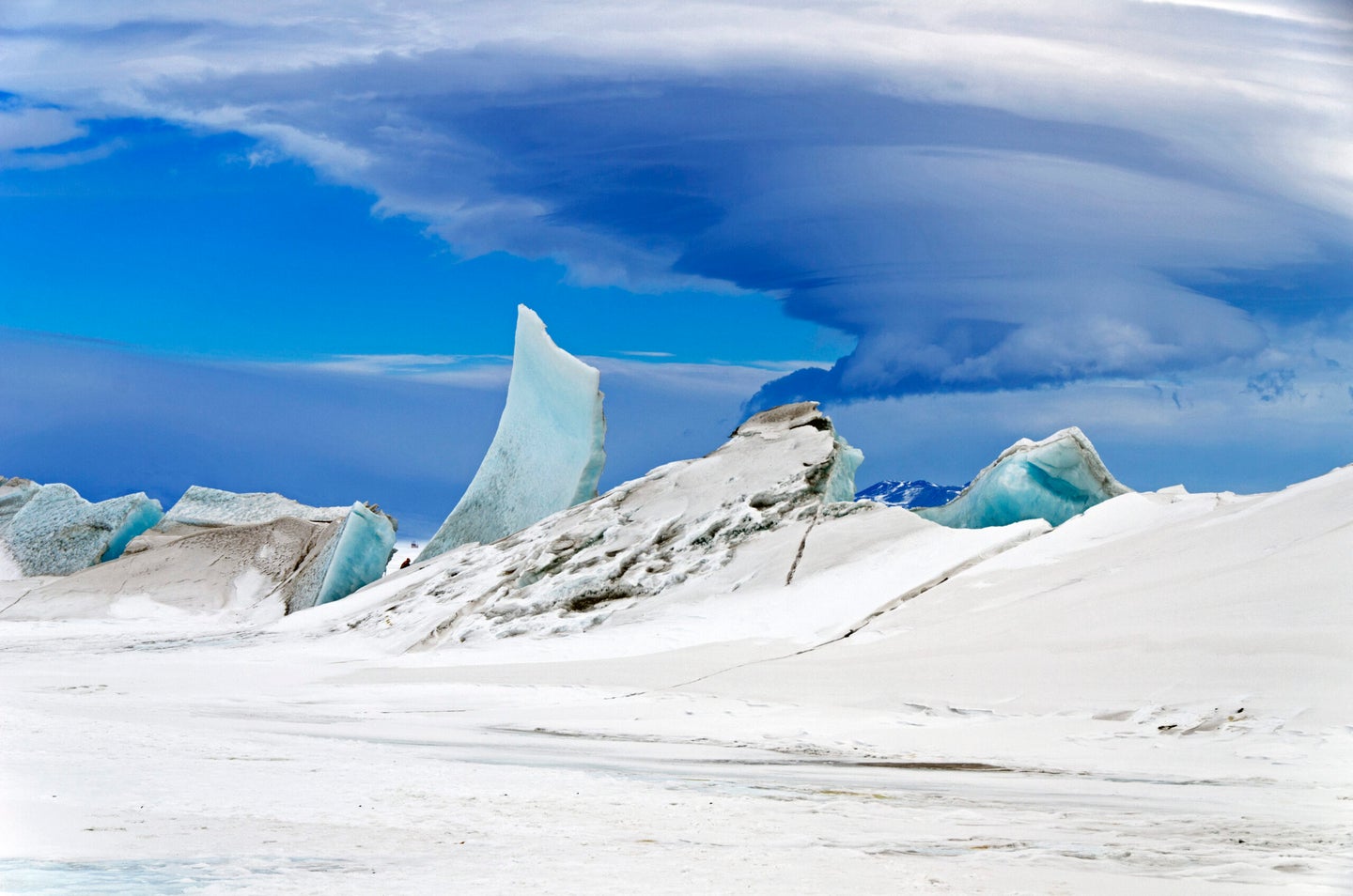Chemicals From Beauty Products Have Migrated To Antarctica
The driven snow might not be all that pure

You make contact with a lot of cyclic volatile methyl siloxanes every day, and you probably don’t even know it. The mouthful of a name refers to groups of chemicals found in numerous human-made items including lotions and other personal care products.
In a paper published recently in Environmental Science & Technology scientists announced that they found these compounds in an unexpected place: Antarctica. They found the chemicals in soils, vegetation, phytoplankton and krill, which was a surprise, because these particular chemicals are supposed to evaporate into the atmosphere and degrade there. In an assessment performed in Canada, researchers found that while one of the more common of these siloxanes, dodecamethylcyclohexasiloxane (we’ll just call it D6) remained in the atmosphere for more than two days, it also “has a low potential to be deposited in water or soil in remote regions.”
With this new evidence, it seems that instead of breaking down, the chemicals travel through the air, eventually getting trapped in falling snow. When the snow melts, the chemicals are introduced to the ecosystem, and wind up in the food chain. It remains to be seen what, if any, effect these chemicals have on the environment. A study done by the United Kingdom’s Environment Agency found that D6 “does not meet the screening criteria for toxicity” after analyzing its effects on fish and invertebrates. Other studies into the safety of these compounds are in the works at other agencies around the world.
Chemical & Engineering News reports that other scientists will want to do independent analysis of soil and vegetation from Antarctica, as contamination of the samples can be hard to avoid. But simply finding a chemical in such a remote an unexpected place remains concerning–if it managed to get there, what else has made the journey?
Unfortunately, this isn’t the first time that pollution has made an impact on Antarctica. By drilling into the Antarctic ice, and examining the ice cores, researchers found that lead pollution arrived from Australia in 1889. More recently, scientists discovered that a significant amount of pollutants, including a toxic flame retardant, were originating from the research stations themselves. It’s the scientific equivalent of the call coming from inside the house.